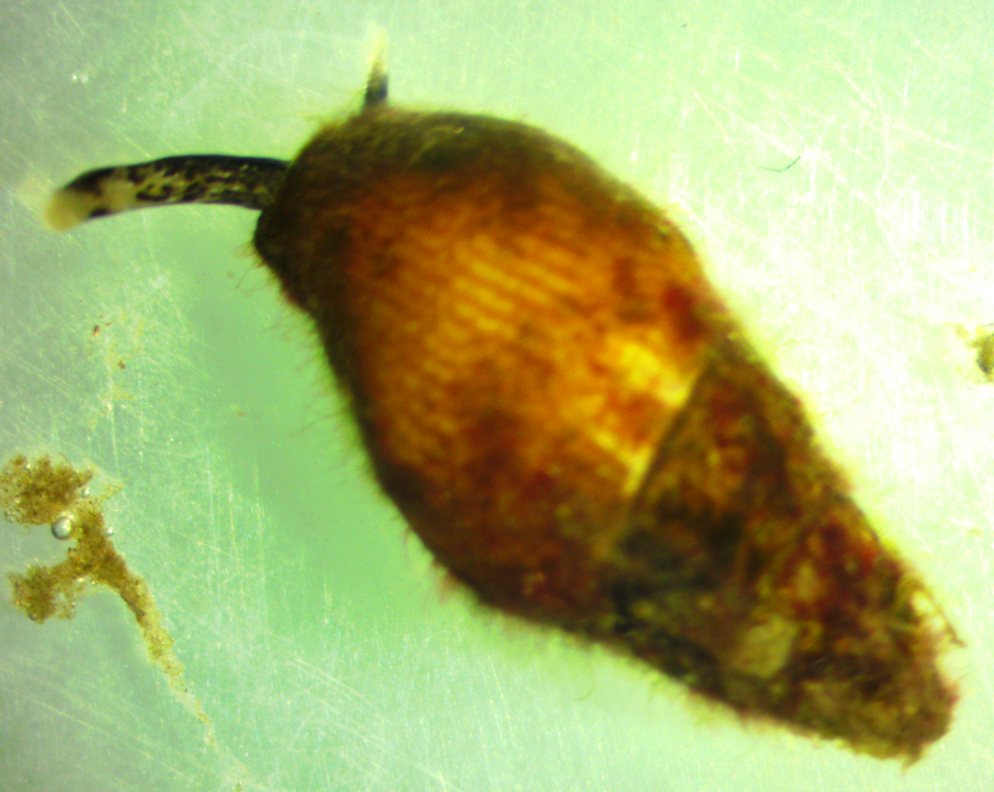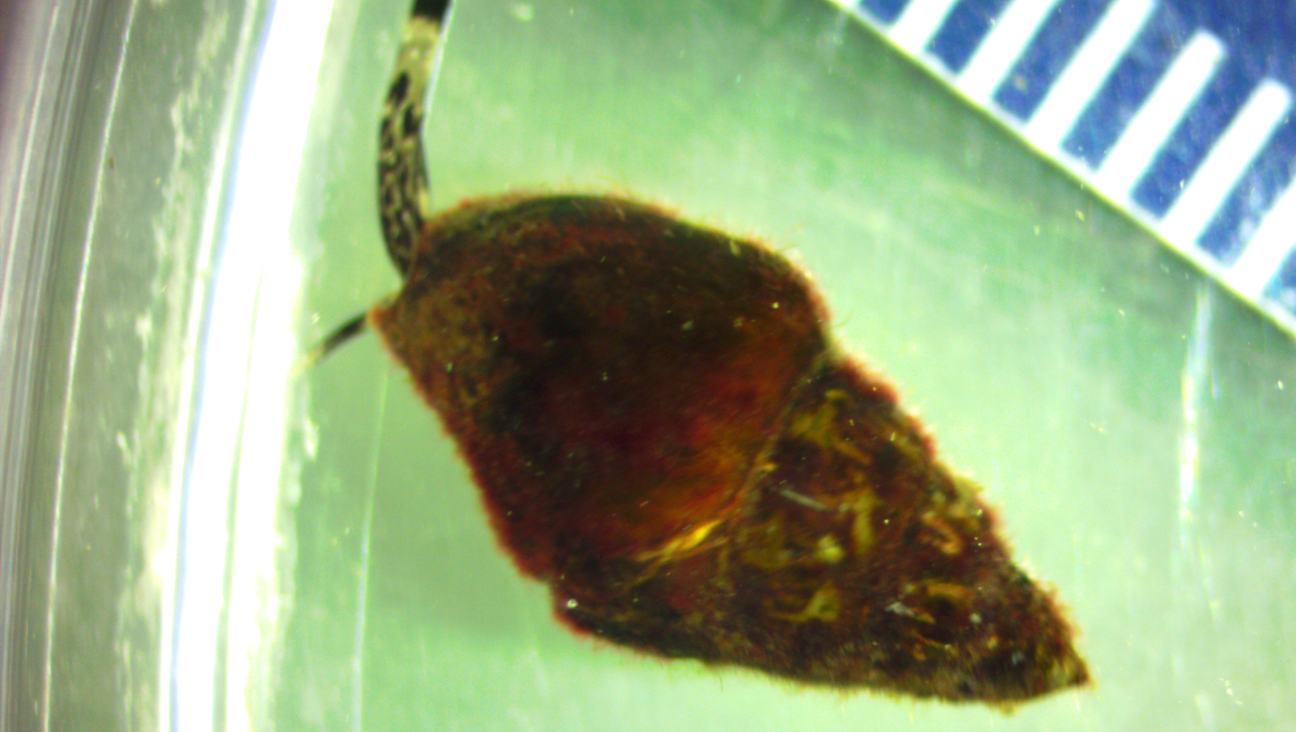Description: Members of Order Neogastropoda have a coiled shell with a well-developed siphonal canal. Their siphon is long also (photo) and their gill is monopectinate (featherlike, but only one side develops). Rachiglossans have a radula with large rasp-like teeth which is characteristic of predators. Sexes are separate. Family Columbellidae are small, mostly tropical snails called dove snails which have shorter siphonal canals than some other neogastropods. Astyris gausapata is a small species with a well-developed spire (about 3-5 whorls in these individuals). Much of the shell is generally covered with brown, slightly rough periostracum (photo). The exterior shell has faint spiral ridges on the anterior portion of the body whorl (photo). These ridges may be quite hard to detect. The columella has either no fold or two or 3 folds. The outer lip of the aperture is not evenly curved-part of it is nearly straight (photo). The operculum is thin and horny (photo). The body is creamy or off-white with distinct black spots and a long siphon (photo). Height of shell up to 1.3 cm.
How to Distinguish from Similar Species: In Alia tuberosa the siphonal region of the shell is obviously set off from the rest of the body whorl. Alia carinata has a large spiral ridge around the upper body whorl. This ridge is often lighter-colored than the rest of the shell and gives the body whorl a distinct shoulder. Several other dove-shell species have spiral ridges visible on other parts of the shell besides the lower part of the body whorl.
Geographical Range: Southern Alaska to northern Mexico
Depth Range: Intertidal to 200 m
Habitat: This species is said to be mainly found under boulders and cobble but these were found on eelgrass.
Biology/Natural History: Shell configuration (the protoconch, or tip of the spire) indicates that the larvae of this snail likely live off body reserves instead of by actively feeding in the plankton.
On the continental shelf off California, this species is a common inhabitant of sandy bottoms both within and away from small methane seeps at depths of around 50 m (Levin et al., 2000).
MacDonald et al., (2012) list this species as a
facultative carnivore
on soft bottoms in the Strait of Georgia. It was one of the dominant
benthic
invertebrates found in sediments off the mouth of the Columbia river
(Hinton,
1998). It is also frequently reported from Cenozoic marine fossil
assemblages
in California.
| Return to: | |||
| Main Page | Alphabetic Index | Systematic Index | Glossary |
References:
Dichotomous Keys:Kozloff, 1987, 1996 (as Alia gausapata)
General References:
Lamb
and Hanby, 2005
Scientific Articles:
Hinton, Susan A., 1998. Benthic infauna and sediment characteristics
offshore from the Columbia River, October/November 1995 and June 1996.
Funded by the U.S. Army Corps of Engineers (E9696001) and the Fish
Ecology
Division, Northwest Fisheries Science Center, national Marine Fisheries
Service, National Oceanic and Atmospheric Administration.
Levin, Lisa A., David W. James, Christopher M. martin, Anthony E. Rathburn, Leslie H. Harris,and Robert H. Michener, 2000. Do methane seeps support distinct macrofaunal assemblages? Observations on community structure and nutrition from the northern California slope and shelf. Marine Ecology Prograss Series 208: pp. 21-39
Macdonald, Tara A., Brenda J. Burd, and Albert van Roodselaar, 2012. Facultative feeding and consistency of trophic structure in marine soft-bottom benthic communities. Marine Ecology Progress Series 445: pp 129-140. doi: 10.3354/meps09478
Web sites:
General Notes and Observations: Locations, abundances, unusual behaviors:
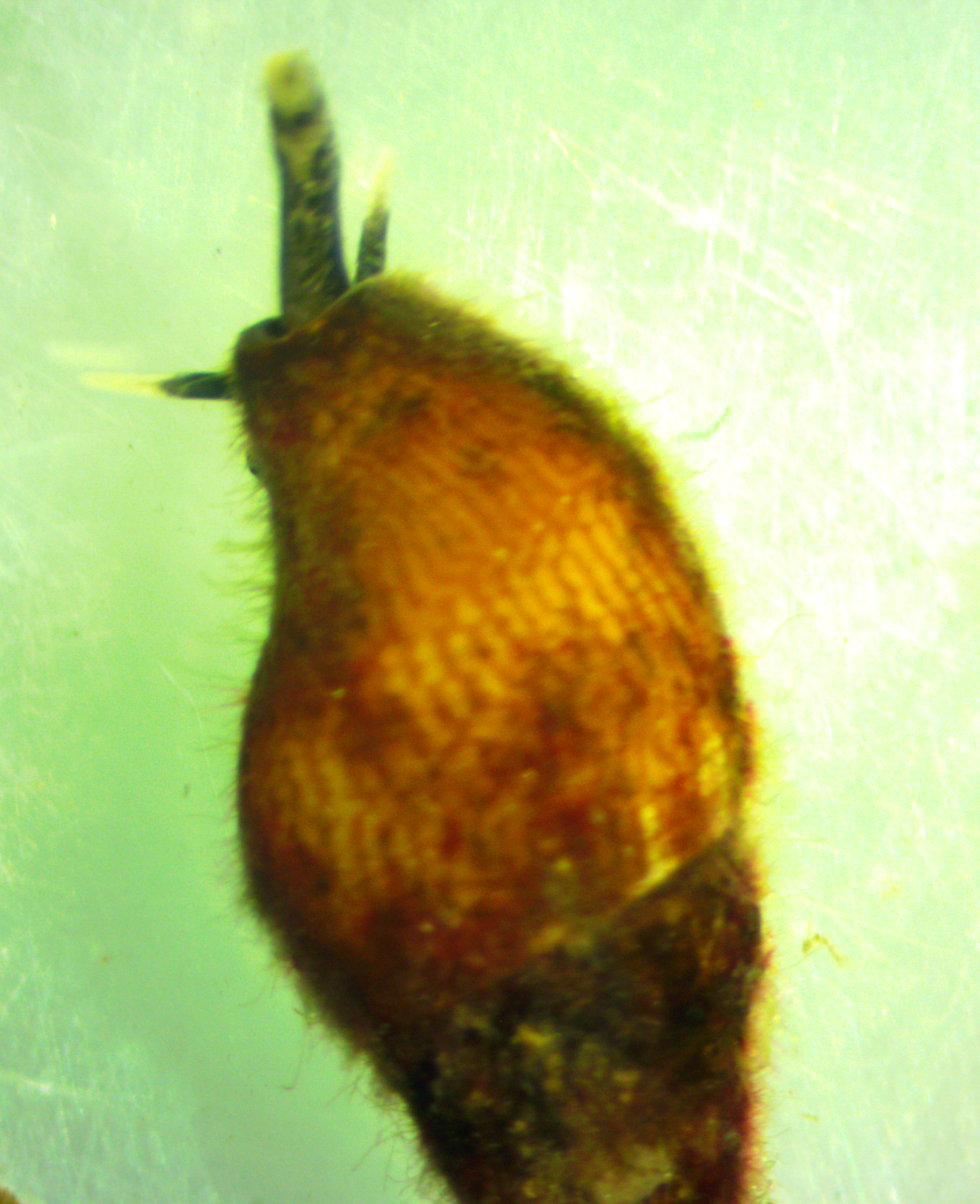
In this photo the brown periostracum
and faint spiral ridges around the lower end of the body
whorl (near the top in this photo) can be discerned. The
periostracum
also seems to have reddish hairs on ondividuals which are not heavily
worn.
Photo by Dave Cowles, August 2024.
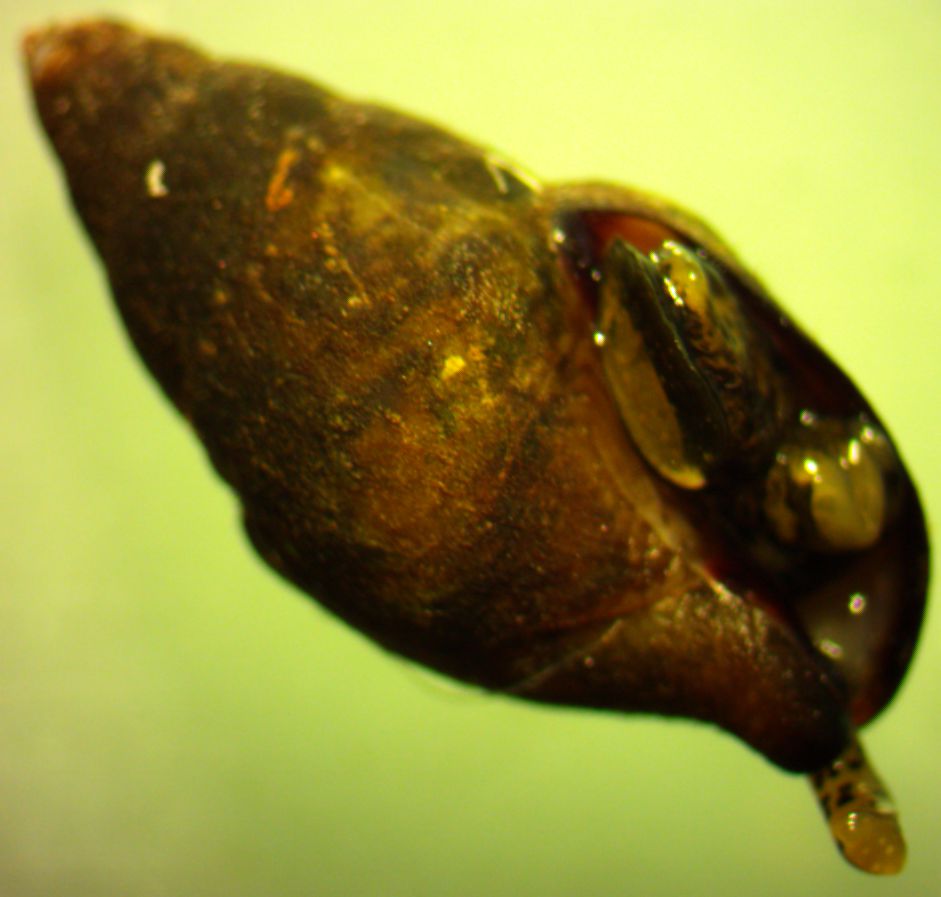
In this image of the aperture
side of the animal one can see that the outer lip of the aperture
is nearly straight in the middle portion instead of evenly rounded. The
short siphonal
canal is also visible. As the animal emerges from the aperture
the thin, horny operculum
is visible, as well as the creamy color with black blotches on the incurrent
siphon. The main part of the body is not yet emerged, so
mainly the
bottom of the foot is visible within the aperture.
Photo by Dave Cowles, July 2018
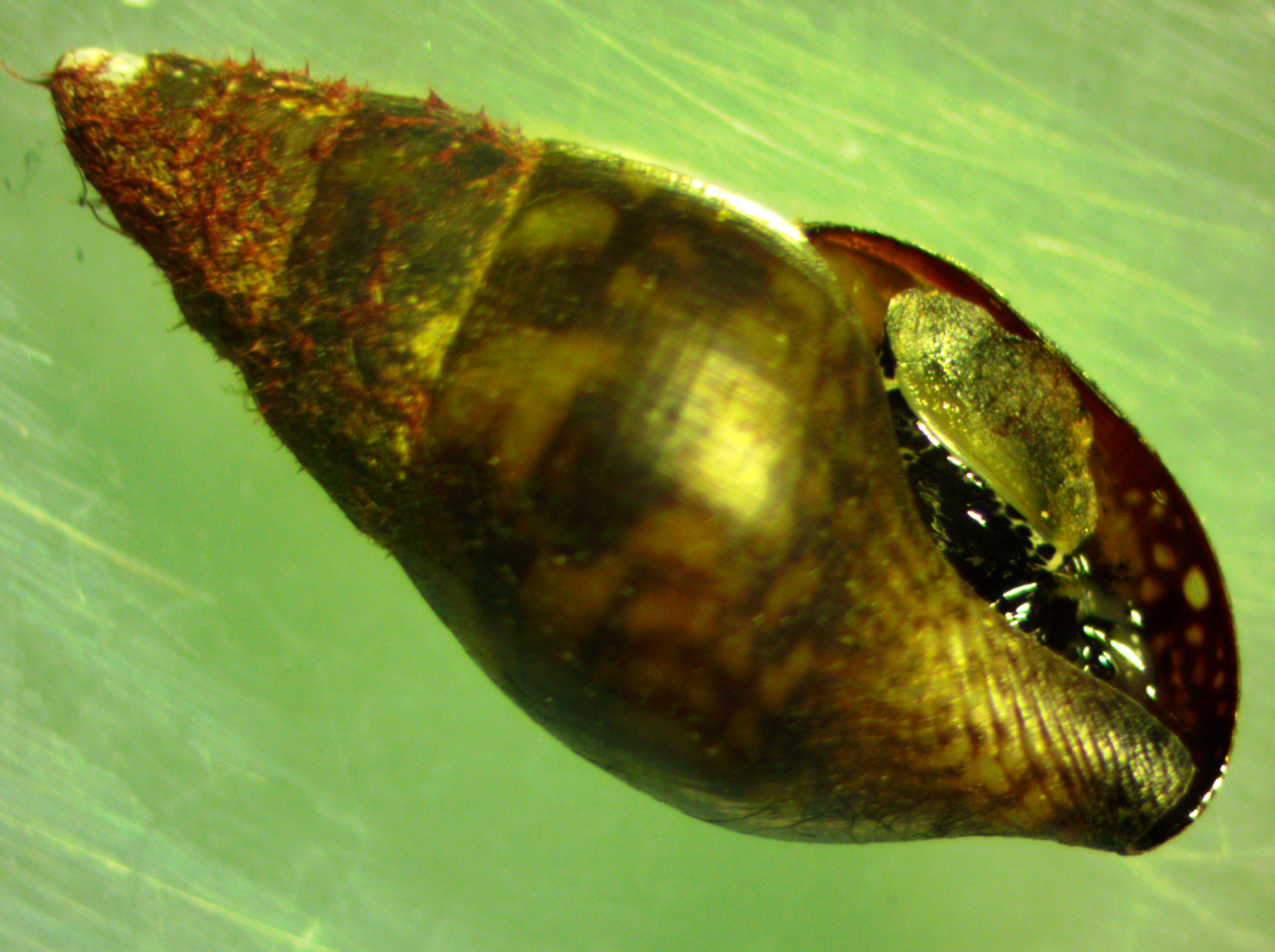
This specimen, collected from Padilla Bay eelgrass in 2024, also shows
the area where the outer edge of the aperture is nearly straight. Note
the reddish hairy growths on the periostracum on this individual as
well.
Photo by Dave Cowles, August 2024.
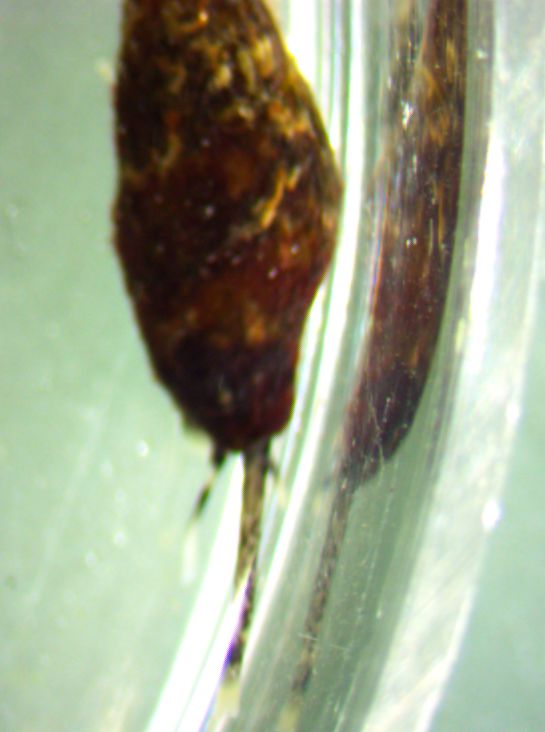
The animal is quite active, and the incurrent
siphon is typically extended and waving far out in front of
the rapidly
crawling snail, in the form of a proboscis. Here the proboscis and its
reflection can be seen as the snail crawls rapidly around the perimeter
of a small petri dish. A movie of the same action can be seen here.
Photo by Dave Cowles, July 2018
Authors and Editors
of Page:
Dave Cowles (2018): Created original page
CSS coding for page developed by Jonathan Cowles
Salish Sea Invertebrates web site provided courtesy of Walla
Walla University
